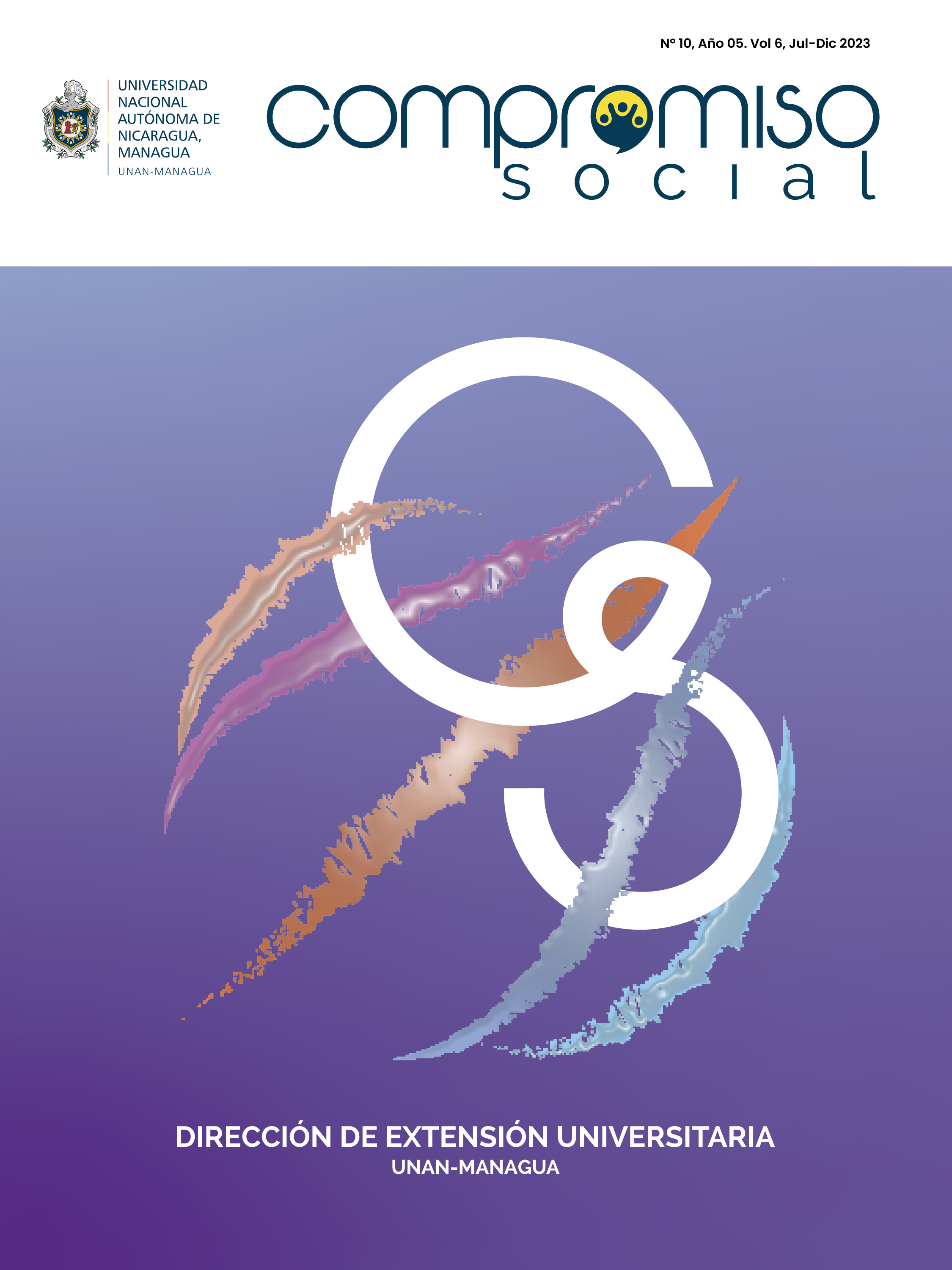Origin of the first families of New Guinea in the Southern Caribbean of Nicaragua
DOI:
https://doi.org/10.5377/recoso.v8i10.18564Keywords:
Organization, Crops, Peasant Families, Food Security, SustainabilityAbstract
The first settlers in New Guinea were originally from the Pacific (León, Chinandega and Carazo) and Central Nicaragua (Chontales) who were brought by the Somoza government to reduce the pressure on the cotton plantations, displaced by the armed conflict and the crisis that coffee and cotton crops were experiencing; plus the volcanic activity of Cerro Negro. To this end, an Agrarian Reform was created, so that the families would be located in an orderly manner, granting them a title that accredited them as owners of a property. This was done by the IAN (Agrarian Institute of Nicaragua).Therefore, this essay considers some analytical categories that allowed organizing the information in a structured way and facilitated the interpretation of the results. Among these we can mention, the socio-political and economic crisis in western Nicaragua, Somoza's Agrarian Reform, the agrarian structure of the colonies, the evolution of cropping systems, the threat to sustainability and food sovereignty in the colonies of New Guinea. Its objective is to highlight the origin of the peasant families of New Guinea, in the Autonomous Region of the South Caribbean Coast of Nicaragua.It should be noted that the peasant families of New Guinea have evolved over time, changing the life strategies from which they originated, being resilient to new soil and climatic conditions, going from a dry climate to rains throughout the year, from agricultural soils to forest-oriented soils and produce their food and sustenance in them economic. The way in which these families organize themselves is admirable, changing strategies in the face of new challenges and falling prices of what they produce, to the point of becoming today one of the most thriving municipalities in the Southern Caribbean of Nicaragua.
Downloads
References
Brenes, H. (22 de Marzo de 2023). Entrevista semiestructurada. (K. Díaz, Entrevistador)
Cardoza, F. (23 de Marzo de 2023). Entrevista semiestructurada. (K. Díaz, Entrevistador)
García, R. (23 de Marzo de 2023). Entrevista semiestructurada, . (K. Díaz, Entrevistador)
Gómez Trujillo, E., Martínez Andrade, E., Rivas García, J., & Villalobos Maradiaga, E. (2016). Seguridad y soberanía alimentaria. Revista Iberoamericana de Bioeconomía y Cambio Climático, 2. https://doi.org/DOI: https://doi.org/10.5377/ribcc.v2i1.5702
Herrera Aguirrez, J., & Miranda Sobalvarro, X. (2020). Diversificación de la producción agropecuaria. Universidad Nacional Agraria. Managua, Nicaragua. Obtenido de https://repositorio.una.edu.ni/4191/1/tne20h565e.pdf
INETER (Instituto Nicaragüense de Estudios Territoriales). (2008). Resumen metereológico anual. Dirección General de Metereología.
La Gaceta, D. o. (Abril de 1963). Ley de la Reforma Agraria. Decreto Legislativo Nª 797. Managua, Nicaragua. Obtenido de http://legislacion.asamblea.gob.ni/gacetas/1963/4/g85.pdf
Landero, B., Obando, S., Salmeron, F., Valverde, L., & Vivas, E. (2016). Agricultura sostenible para enfrentar los efectos del cambio climático en Nicaragua. Friedrich-Ebert-Stiftung FES (Fundación Friedrich Ebert), 99. Managua, Nicaragua.
López Mairena, E. (2003). Caracterización del municipio de Nueva Guinea. Revista Unversitaria del Caribe. Universidad de las Naciones Autónomas de la Costa Caribe Nicaragüense, 9(1), 6-31. Obtenido de https://revistas.uraccan.edu.ni/index.php/Caribe/article/view/236/1342
Morales, Y. (28 de Marzo de 2023). Entrevista semiestructurada. (K. Díaz, Entrevistador)
Obando, G. (4 de Abril de 2023). Entrevista semiestructurada. (K. Díaz, Entrevistador)
Ocampo, J. (5 de Abril de 2023). Entrevista semiestructurada. (K. Díaz, Entrevistador)
Pettiens, C. (26 de Abril de 2023). Entrevista semiestructurada. (K. Díaz, Entrevistador)• Pettiens, J. (4 de abril de 2023). Entrevista semiestructurada. (K. Díaz, Entrevistador)
Pettiens, J. (23 de Abril de 2023). Entrevista semiestructurada,. (K. Díaz, Entrevistador)
Rosset, P. (2014). Soberanía alimentaria: reclamo mundial del movimiento campesino. Ecofroteras, 18(51), 4. Obtenido de https://ecosur.repositorioinstitucional.mx/jspui/bitstream/1017/863/1/0000022841_documento.pdf
Ruíz, A. (Marzo de 23 de 2023). Entrevista semiestructurada. (K. Díaz, Entrevistador)
Villalta Orozco, M. (2017). Lo indígena y las reformas agrarias en Nicaragua durante la segunda mitad del siglo XX. Universidad Nacional Autónoma de Nicaragua, Managua UNAN-Managua. Torreón Universitario, 6(17), 41-52. https://doi.org/https://doi.org/10.5377/torreon.v6i17.6878
Downloads
Published
Issue
Section
License

This work is licensed under a Creative Commons Attribution-NonCommercial-NoDerivatives 4.0 International License.




